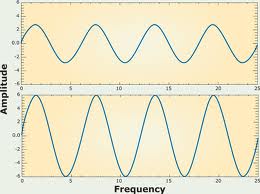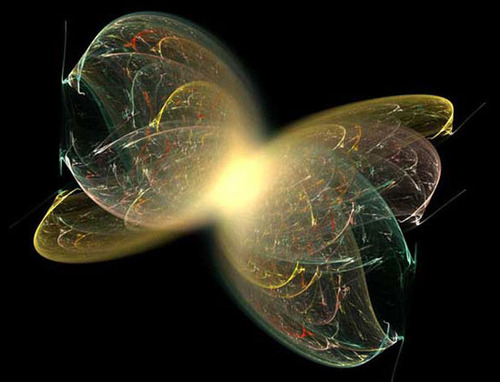Understanding Cycles: Attributes of Cycles
Part 2

We began our look at cycles in part one where we talked about cycles, what they are and how they are created as well as the roles they play in our lives. We touched on there being both natural and man-made cycles, where the man-made variety are the cycles we manifest ourselves through our thoughts and the consequences of them. It is negative cycles of the latter variety that we are focusing on.
The complexity of all the vibrations in the Cosmos let alone that of our mind and the energies we manifest renders cycles virtually impossible to categorize. There are cycles that last aeons and those that come and go in a flash and we are affected by them as we are by the cycles we create ourselves. There is an old saying, “As above, so below”, hence cycles occur at every level of creation. This is also why finding and dealing with the ones we manifest is difficult and there is no formula or single process to work on them. However, as I have said before, our mind is incredibly powerful and we do not need facts and details to make change happen. If we can identify a cycle and then examine it in more detail we can find its source.

The source of our problems or challenges is either associated with the lessons we bring in with us or our mind. That source will be a group of beliefs (thoughts) that are not in balance and erroneous. So how do we go about finding our negative cycles? While there is no formula one can go by the old phrase of where there is smoke there is fire. When we have events that seem to repeat or a series of events that may not seem to be related there is cause for examination.
Our focus will be on the key aspects of cycles and how knowing them helps us identify and work on our negative cycles. To do this we will look at some ways we can approach our self-exploration such that can help to clear them. Again, remember that we can also use the same technique to identify and reinforce positive cycles. In this case instead of working on changing the thoughts that gave rise to cycle we would contemplate them and commit ourselves to them more fully.
As we go through some of the characteristics of cycles, I will touch on possible causes as examples. Do not take them literally, for everyone has their own uniqueness. I have already mentioned one aspect of cycles, namely their length. The longer a cycle is the more they tend to be related to significant life challenges. These are often ones we brought in with us to work on throughout our life. Nonetheless we should not assume this is the case.
It is worth remembering that one of the reasons we do not see what is going on in our lives is we rarely take a “long view” look at our experiences and often we simply don’t ask ourselves the right questions. This is because our ego tends to by myopic and is mired in the very patterns we seek to find and deal with. Nonetheless, the answers we seek are within us, we simply need to learn to unlock them. Key to this is honest self-examination. We will not resolve our negative cycle simply because we have an understanding the type of cycle, or its frequency, amplitude or the types of energies involved. These are clues as to what cause them, and our revolving them comes down to using our minds and intuition.
It is very likely you will notice aspects of cycles I have not covered. Do not discard them if they help you because the list I present is hardly exhaustive and your perspective or approach can yield an entirely different list. By thinking about your life in new ways you will certainly bring in new perspectives. What helps us do this is being forgiving of and non-judgemental about ourselves, open minding, imaginative and curious and trying to use your intuition to listen to what our experiences are telling us about ourselves.
This list and the points I have put forward below are far from exhaustive, nor is this the intent. The intent is to give you ideas consider about different aspects of cycles and the mechanisms that can enable them. The only purpose of considering these elements is to trigger thoughts about the cycle that can help you to explore why it is happening. Epiphanies can occur, that is “the light may suddenly come on” though it is likely you will need to do some exploring in order do something about your cycles or to set up the conditions for an epiphany.
Length of Cycles
The length of a cycle is the period duration of time between of experiences that are part of the cycle. There is no way to tie the length of a cycle to any particular type of issues though the longer the cycle is the more likely it is tied to a life lesson versus one we have manifest since birth (though this can certainly happen as well).It is possible that a life lesson cannot be fully resolved. This can happen when we are here to explore the dynamics of a particular belief or the interactions between beliefs from different angles. Either type of cycle can result in circumstances we perceive as negative, though we must remember that the experiences are our teacher.
Cycles are the result of the dynamics of our thoughts or beliefs and the energies they create. Knowing this, what can we infer about an issue(s) that manifests a cycle from its length? First, those that are the result of one or a couple beliefs are likely to be shorter in length. They are less complex and can even surface for a short period of time, running through a few cycles and then they disappear. A short cycle may vanish because we have made an adjustment of some kind that is sufficient to break up the cycle. It is also possible that they can reform though they would manifest in a different way than before because the thoughts or beliefs are different. As a result if and when they reappear they are likely different than the previous times.
The more factors that are involved in manifesting a cycle, factors being beliefs that are not in tune, the longer the cycle tends to be. This stands to reason for if you consider that the beliefs are a vibration then when you have several beliefs involved they will have “different frequencies”, hence they would all only “line up” every so often. For example take cycles with relative lengths of 2, 3 and 7 then they would only match when all three line up after 42 units (that being the number having 2, 3 and 7 as factors).
While this may sound odd, realize that everything is energy, and if not influenced by something such as our thoughts from subsequent experiences they will react in calculable ways. This is why the more complex or high level the thoughts involved in manifesting a cycle the longer cycle is likely to be. The beliefs that underlie life issues tend to be of this nature that is why their cycles can be years long rather than in weeks or months.
When cycles manifest depends on how they were created. Obviously if and when any cycles manifested by beliefs we brought into this lifetime begin to occur they do so on their own. Those we create during a lifetime can begin when we manifest the thoughts that give rise to them or any time after. The cycle is the consequence of the thoughts.
Minor issues will tend to come and go, but it is likely that those connected to major lessons will continue to come back or manifest in our lives for a number of reasons. Some of these would be the underlying beliefs and the issues they manifest remain unresolved or our inner self decides that the opportunity for the lesson has passed or the issue creates a longer more difficult issue for us to resolve. The exception would be where a number of short-term cycles occur in succession. In this case, look for connections between the cycles. If you do not find any in the type of experiences they manifest then look at other factors such as timing, proximity to certain events or key times in your life.
If cycles occur “out of the blue”, it can be a prompt from within we are ignoring. In other words, our inner self is trying to “wake us up” or move us along a new path. Issues connected with lessons generally occur over a number of years, or resurfaces for periods. It is also possible that the issue has only remained dormant because our lives lack the right circumstances for them to manifest. These are not to be confused with the cycles that exist naturally within our lives. How does one know the difference? You really do not; except for the fact that natural cycles are usually constant, that is if you have a seven year or ten year cycle you will always follow that pattern. In addition, the natural cycles that occur in life are not negative per say. We may be in a cycle of growth, or of synergizing ideas, or of building up certain awareness or even in pause mode. This is somewhat different from cycles where certain types of experiences repeat, issues return and recur with a particular frequency.
It is all simply the dynamics of energy. Cycles occur because of the reactions to our beliefs, they continue because the energy of our reactions persists. This is similar to the interactions of waves, where you get constructive and destructive interference, except the waves do not go away on their own. The energies or vibrations created do not simply fade over time. You cannot destroy energy; it can only be changed or transmuted. This means we need to be aware of the significance, examine what the issues affect and work from there. We do not generally know the true purpose of our lives, or the awareness we are here to develop.
Amplitude (size)
When I use the term amplitude of a cycle, I am referring to its magnitude, that is to say are the consequences minor or significant? The difference between these two depends on the importance of the issue and our state of mind. Say one is misplacing or losing things repeatedly. Well, if losing things is an annoyance then the magnitude is small, however if we are regularly losing or misplacing things, such our car keys, money, track of time and so on that makes us late for a job, unable to pay a bill or to deal with some other negative consequence the magnitude is likely higher.
Obviously the bigger the issue the more attention one needs to pay. Generally, if it an important issues it will continue to surface until we have dealt with it or at we have shifted enough to get the lesson. In this case, we should notice if the amplitude has changed. For issues we need to address the amplitude tends to grow. Again, this does not necessarily mean that we can correlate the amplitude of the cycle with the seriousness of the consequences. In addition, while we may have a big concern over some issue or situation it does not mean this holds true for our inner self. It is more concerned about our long-term development than our feelings or reactions in the moment regarding particular events. Our rational mind manifests our response or how we feel about the experience, based on its programming.
Also, the amplitude of a cycle can vary though in such cases tend to indicate that what you think are aspects of the same cycle are not related to it or there has been some shift in the underlying beliefs. Cycles that build in either intensity or frequency (length) are of worthy note, for such cycles indicate growing urgency. When this happens it is because we are being pushed from within to work on the issue. It would be impossible to list the reasons for the urgency for there are any number of reasons why this could be so.

Intensity
Intensity is not the same as magnitude. In general terms magnitude is how much, intensity is how much how fast. For example, working eight hours is the magnitude; the intensity is how hard one worked during those eight hours. Similar to amplitude, intensity in itself is not indicative of how we feel about the issue or experiences not their importance to our development. Intensity is about how we react to or perceive the events or experiences within the cycle. We should consider the nature of our feelings and their significance in our lives in general.
If one has a cycle that is intense, then there is may be some urgency behind it (as discussed under amplitude) though not necessarily so. This could also be the result of, for example, our letting the energies of our reactions build up making an issue out of something that previously was not a problem. This is the source of the phrase “making a mountain out of a mole hill”. However, for the person dealing with it the problem can be significant as it indicates there are underlying stresses that are unresolved, ones they may not even be aware of these issues.
Timing of the Cycle
We are here to learn and key events in our lives provide fertile grounds for growth. If a cycle revolves around key events such annual events such as birthdays, family gatherings, religious events, anniversaries, or the timing of tragedies and so forth, then the issue one is working on is likely directly related to some aspect of the emotional and mental dynamics involved in the event. Such events can expose old buried issues, which is why many people avoid such gatherings and when they do attend, they are never comfortable. These issues can be difficult to get at as most are a result of our early development and the programming of our rational mind combined with events we cannot handle at the time.
We can bind up incredible amounts of emotional energy over the years by not resolving issues earlier. Unfortunately, we are generally not mentally strong enough as children to do this, and so we tend to steer our lives to avoid what makes us uncomfortable. This is not a mistake; however, barriers and walls do not help us in our growth or finding balance. Search through your history; try to revisit memories that may be painful. Do so from as objective a point of view as possible, and remember a memory cannot hurt you although they can make you uncomfortable.
Timing can also be observed at other key moments, like special events and milestones in our work and personal lives. Again, the timing is a great indicator that the problem is tied to a belief that is related to the type of event or
the circumstances. Examples would be beliefs related to our opinion of ourselves or our relationships with others or even what we might imagine to be our purpose in life.
Thought and Feelings That are Triggered
In a particular cycle we can learn more about the underlying dynamics of what is going on by looking at the kinds of though forms and emotions that are activated. When fewer or shorter cycles are occurring or activated it can be easier to find ideas and concepts to focus on and work through. Thoughts and emotions not connected to the cycle can make it more challenging to figure out what is actually going on and what we need to focus or work on first. This can make them easier to resolve, since there are less beliefs in play, we can often see what the issue is even though we struggle to get past it. We may know what we need to do and now it is a matter of dealing with our own resistance to the needed change.
When a variety of thoughts and the emotions that result are at the root of a cycle the challenge is in trying to find a common thread, namely that which binds them together and results in the cycle we are experiencing. In such a situation it is best to work on it one feeling or emotion at a time. Which ones one you choose to work on first depends on your situation and the affect of the issues on your life. You can take the approach of working on what could hurt you the most or what you feel you can handle at the time. There is nothing inherently wrong with either way.
Repeated Situations
A cycle that manifests as a series of similar situations can often be the easiest to work on. To try to understand and resolve it do not just look at the event itself. Consider what leads up to it, the timing of it, the people involved, your state of mind, the types of thoughts you are having or some other aspect related to the situation. They share some commonality; you may need to be intuitive and imaginative to discover what it is.
For instance, if one finds they are always late for things they may be inclined to believe the issue is that they do not plan or prepare properly or perhaps that they are lazy. This may be the case, though it could also be from our lack of commitment to the activity or that the activity itself is not in our best interests. You can simply ask yourself the question and try to feel whether it is true or not. One can do this best when in a meditative posture which includes some process for grounding, clearing and centering oneself.
Other Aspects to Consider
I have covered a number of ways one can look at and start to work on negative cycles. Really, the only limitation in how one looks at them is our imagination. As suggested above, ask yourself questions during times of contemplation or during your meditations (we will cover this later in book with exercises to help). For instance, does the cycle involve particular people, things, types of events, or places? Does it affect only you or are there others who seem connected. It may be the types of people or how feel about the situation or aspects of the experience. Consider combinations of the factors touched on above as well, especially if the cycle shifts somewhat but does not go away. In this later case, you may have discovered part of what is going on, hence the shift, though not all.

Try to categorize causes under, for example:
- type of thought forms
- interconnectedness of thoughts
- number of thought forms involved
- relevance to current experience
- degree of misalignment
As I mentioned earlier this list is not meant to be exhaustive. It is meant as a guide, to give you ideas to consider so that you can find your own way to notice your cycles and begin to understand their underlying dynamics. It hopefully also gives you a way to tell the difference between events that may be part of a cycle from those that just happen because the right circumstances occur and which will never happen again. Given the consequences of negative cycles can range from the annoying all the way to devastating it is up to each of us to decide what we will work on at any point in our lives. What is left to explore further are the types of “mechanisms” that lead to cycles, so we can try to avoid them, and how we can put what we’ve looked at in these first two parts into practice to work on our cycles. We will do this in the next part and final part in this series.

© 2013 Allan Beveridge






